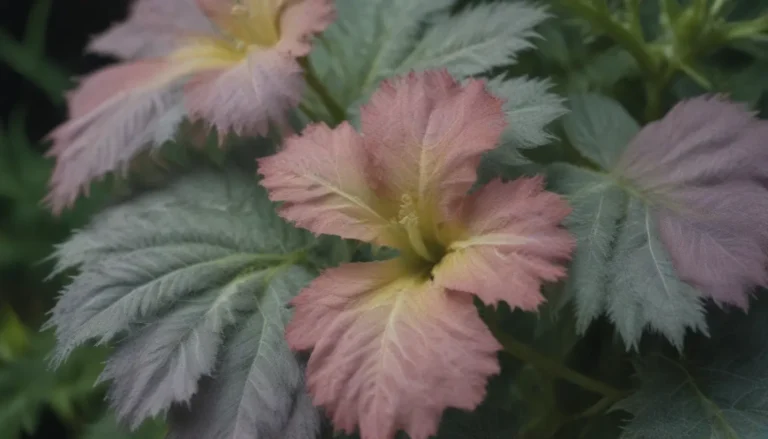A Comprehensive Guide to Growing and Caring for Tiger Lilies

Tiger lilies are stunning perennial flowers known for their uniquely curved orange petals speckled with dark spots. If you’re looking to add these vibrant blooms to your garden, it’s essential to understand how to properly care for them. In this article, we’ll explore everything you need to know about growing and nurturing tiger lilies to ensure they thrive in your outdoor space.
Getting to Know Tiger Lilies
Before diving into the specifics of caring for tiger lilies, let’s familiarize ourselves with some key characteristics of these beloved flowers. Tiger lilies are herbaceous perennials that prefer to bask in the sun, bringing a burst of color to your garden during the summer months. Here are some important details to keep in mind:
- Tiger lilies thrive in sunny locations with at least six hours of direct sunlight each day.
- They prefer well-draining soil that is slightly acidic, although they can tolerate various soil types.
- Tiger lilies have average water needs and benefit from consistent watering, especially during dry periods.
- These resilient flowers can adapt to different temperature and humidity conditions, making them a versatile addition to any garden.
Now that we have a better understanding of tiger lilies, let’s explore the essential steps to successfully grow and care for these vibrant blooms in your outdoor space.
Tiger Lily Care Tips
Light
While tiger lilies prefer to bask in the sun, they are not as finicky about growing conditions as some other flowers. Here are some tips for providing the right amount of light for your tiger lilies:
- Sunlight: Ensure your tiger lilies receive at least six hours of direct sunlight for optimal growth.
- Shade: These versatile flowers can also tolerate partial shade and benefit from some protection from the hot afternoon sun.
Soil
Proper soil drainage is essential for the health of your tiger lilies. Here are some tips for ensuring your soil is suitable for these vibrant blooms:
- Amendments: Consider adding compost or humus to improve soil drainage around the bulbs.
- Soil Type: Tiger lilies prefer fertile, slightly acidic soil, but they can adapt to various soil types.
Water
Maintaining adequate moisture levels is crucial for the health of your tiger lilies. Here are some watering tips to keep your flowers happy:
- Consistent Watering: While mature plants can tolerate some drought, consistent watering is preferred, especially during dry periods.
- Rainfall: If your area receives regular rainfall, it may be sufficient to keep your tiger lilies hydrated.
Temperature and Humidity
Tiger lilies are robust flowers that can withstand temperature and humidity fluctuations. Here are some tips for ensuring your tiger lilies thrive in different environments:
- Seasonal Growth: Tiger lilies start to grow in spring after the last frost and go dormant in fall and winter.
- Hardiness Zones: Ensure you are planting your tiger lilies within the appropriate USDA hardiness zones for optimal growth.
Fertilizer
Tiger lilies do not require heavy fertilization. Here are some tips for providing the right nutrients for your flowers:
- Compost: A layer of compost around the base of your plants once or twice a year should provide sufficient nutrition.
- Mulch: Apply mulch in late spring to help keep the roots cool during the summer months.
By following these care tips, you can ensure that your tiger lilies thrive and bring a burst of color to your garden every summer.
Propagating and Pruning Tiger Lilies
Propagation
If you’re interested in propagating your tiger lilies, there are a few methods you can use:
- Bulbils: Remove bulbils that form on the parent plant to propagate new tiger lilies.
- Bulb Division: Divide your tiger lily bulbs in spring or fall to encourage new growth.
Pruning
Pruning is essential for maintaining the health and appearance of your tiger lilies. Here’s how to approach pruning your flowers:
- Foliage: Trim faded foliage in late summer and cut down stalks to ground level in late fall to encourage new growth.
By propagating and pruning your tiger lilies correctly, you can ensure they continue to bloom beautifully year after year.
Types and Varieties of Tiger Lily
While the familiar orange tiger lily is a pure species, there are also hybrid varieties with red, pink, white, and yellow flowers available. These variations offer gardeners a colorful array of options to enjoy throughout the summer months. Let’s take a closer look at some common types of tiger lilies:
- Asiatic Hybrids
- Easter Lilies (Longiflorum Hybrids)
- Oriental Hybrids
These various types of tiger lilies provide a diverse range of colors and shapes to enhance your garden’s visual appeal.
Overwintering and Common Issues
Overwintering
As the seasons change, it’s important to properly care for your tiger lilies during the winter months. Here are some tips for overwintering your flowers:
- Insulation: Mulch the planting site to provide insulation for the bulbs during freezing temperatures.
- Drainage: Ensure the planting site does not become waterlogged, as the bulbs require minimal water during dormancy.
Common Pests and Diseases
While tiger lilies are resilient plants, they can still fall victim to pests and diseases. Here are some common issues to watch out for:
- Lily Mosaic Virus: Dispose of infected plants and bulbs to prevent the spread of this harmful virus.
- Lily Leaf Beetles: Treat your plants promptly if you notice damage caused by these pesky insects.
By staying vigilant and addressing common issues promptly, you can help your tiger lilies thrive and remain healthy year after year.
Encouraging Bloom and Addressing Common Problems
Encouraging Bloom
If you’re looking to encourage more blooms from your tiger lilies, here are some tips to help you maximize flowering:
- Proper Care: Continue to provide adequate moisture levels to support blooming.
- Dividing Bulbs: Dividing overcrowded bulbs can rejuvenate your plants and encourage more flowers.
Addressing Common Problems
While tiger lilies are generally low-maintenance plants, they can develop issues if growing conditions are not optimal. Here are some common problems and how to address them:
- Yellowing Leaves: Overwatering and poor drainage can cause yellowing foliage. Adjust watering practices to ensure proper soil moisture.
- Plant Turning Brown: Brown patches may indicate aphid infestation. Use insecticidal sprays to control these pests.
- Holes in Leaves: Holes in leaves may be a sign of lily leaf beetles. Take action promptly to protect your plants.
By addressing common problems and providing the right care, you can help your tiger lilies thrive and bloom beautifully year after year.
Final Thoughts
Tiger lilies are versatile, colorful flowers that can add a vibrant touch to any garden. By following the care tips and techniques outlined in this guide, you can ensure that your tiger lilies thrive and bring joy to your outdoor space each summer. Whether you’re a seasoned gardener or a newcomer to the world of gardening, growing tiger lilies can be a rewarding experience that brightens up your landscape.
Remember, with a little patience and dedication, you can create a stunning display of tiger lilies that will be the envy of your neighborhood. So roll up your sleeves, grab your gardening tools, and get ready to cultivate a beautiful garden full of these exquisite blooms. Happy gardening!





